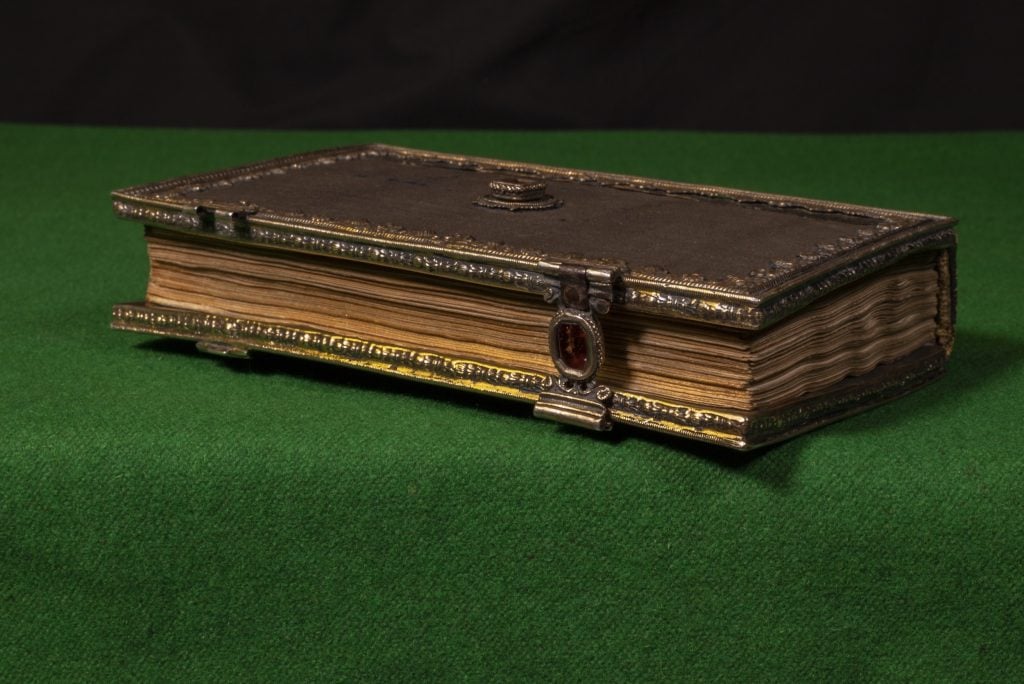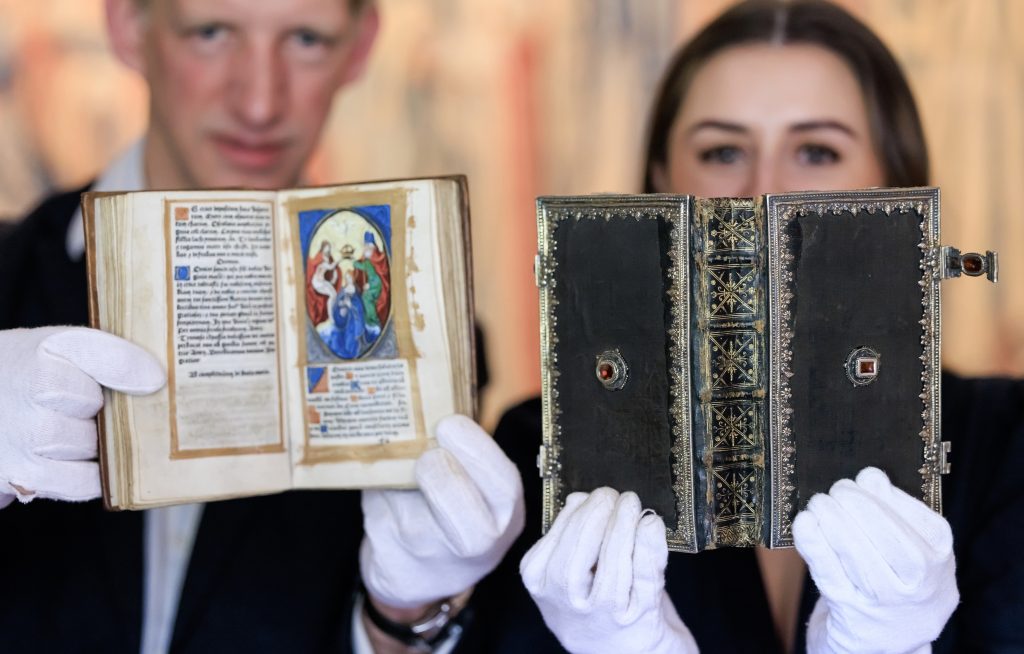The investigative powers of science and art have combined to identify a jeweled Book of Hours in the collection of Trinity College, Cambridge as belonging to English statesman Thomas Cromwell, who was Chief Minister to King Henry VIII from 1534 to 1540.
Curators at Hever Castle were conducting research ahead of an exhibition comparing Catherine of Aragon and Anne Boleyn when they realized Cromwell had a version of the same Christian prayer book as Henry VIII’s two wives. The link? A portrait of the political giant by Hans Holbein the Younger.
In the portrait, which dates from 1532-1533 and is part of the Frick-Collection in New York, a stark-faced Cromwell stares pensively away from the viewer. The painting celebrates Cromwell’s appointment as Master of the Jewel House (hence the importance of the book’s gem) and the tools of his statecraft lie on the table before him: a legal document, a pen, scissors and his Book of Hours, printed in 1527.
Conservators at Hever Castle passed their hunch to Trinity College and experts now believe its identification makes it the only remaining object of any 16th-century portrait surviving today.

Part of Hans Holbein’s painting with Cromwell’s prayer book. Photo courtesy of Trinity College Cambridge.
Known as Hardouyn Hours after its Parisian printer, the book was given to Trinity College, Cambridge in 1660 by Anne Sadleir who married the grandson of Cromwell’s secretary, Ralph Sadleir, who historians say probably inherited the book among other valuable personal items.
There are two main reasons why Cromwell’s prayer book has remained a mystery, said Hever Castle curator Dr Owen Emmerson. To begin with, the book is printed, and research has focused heavily on the handwritten texts. by Anne Boleyn version, for example, has so far not been the subject of extensive study by historians. “The second reason,” Emmerson told Artnet News, “is that it sat dirty for many decades, the dirt and tarnish obscuring the finer details of the vermeil binding.”
With the lineage firmly established, Trinity librarian Nicolas Bell sought to deepen its materiality by collaborating with other scholars. The gemstones affixed to the front and clasps were previously believed to be jasper or hyacinth, but a Cambridge Department of Materials Science study using Raman spectroscopy showed that they were garnets.

Kate McCaffrey [right], Assistant Curator at Hever Castle, holds Thomas Cromwell’s book alongside Nicolas Bell, Librarian of Trinity College, holding one belonging to Anne Boleyn. Photo courtesy of Hever Castle and Gardens.
To investigate the book’s vermeil border, Trinity turned to Michele Bimbenet-Privat, a former silver specialist at the Louvre who identified the hallmarks as those of Pierre Mangot, the silversmith to King Francis I of France and, incidentally, frequently worked with Holbein. The addition of an engraved “a” dates the binding to between December 1529 and 1530, a year or two after the book was printed.
“It was hugely exciting to position this luxurious creation in the very center of Henry VIII’s court,” said Dr Bell. said in a press release.
Trinity lent Cromwell’s prayer book to Hever Castle until November 2023 for its exhibition “Catherine and Anne: queens, rivals, mothersthe first time since he received the gift more than 350 years ago.
More trending stories:
Is time travel real? Here are 6 tantalizing proofs of art history
Follow Artnet News on Facebook:
Want to stay one step ahead of the art world? Subscribe to our newsletter to receive breaking news, revealing interviews and incisive reviews that move the conversation forward.
